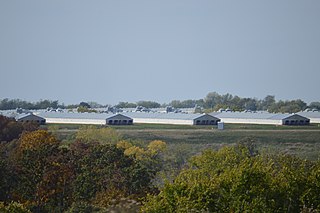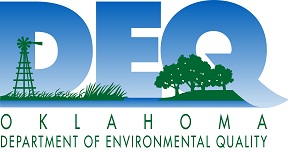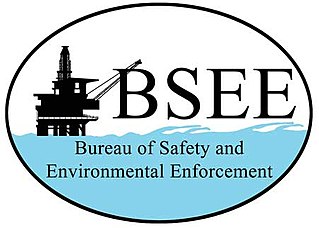
Environmental laws are laws that protect the environment. This includes environmental regulations; laws governing management of natural resources, such as forests, minerals, or fisheries; and related topics such as environmental impact assessments.

The Environmental Protection Agency (EPA) is an independent executive agency of the United States federal government tasked with environmental protection matters. President Richard Nixon proposed the establishment of EPA on July 9, 1970; it began operation on December 2, 1970, after Nixon signed an executive order. The order establishing the EPA was ratified by committee hearings in the House and Senate. The agency is led by its administrator, who is appointed by the president and approved by the Senate. The current administrator is Michael S. Regan. The EPA is not a Cabinet department, but the administrator is normally given cabinet rank. The EPA has its headquarters in Washington, D.C., regional offices for each of the agency's ten regions, and 27 laboratories. The agency conducts environmental assessment, research, and education. It has the responsibility of maintaining and enforcing national standards under a variety of environmental laws, in consultation with state, tribal, and local governments. It delegates some permitting, monitoring, and enforcement responsibility to U.S. states and the federally recognized tribes. EPA enforcement powers include fines, sanctions, and other measures. The agency also works with industries and all levels of government in a wide variety of voluntary pollution prevention programs and energy conservation efforts. The agency's budgeted employee level in 2023 is 16,204.1 full-time equivalent (FTE). More than half of EPA's employees are engineers, scientists, and environmental protection specialists; other employees include legal, public affairs, financial, and information technologists. Many public health and environmental groups advocate for the agency and believe that it is creating a better world. Other critics believe that the agency commits government overreach by adding unnecessary regulations on business and property owners.
Environment and Climate Change Canada, is the department of the Government of Canada responsible for coordinating environmental policies and programs, as well as preserving and enhancing the natural environment and renewable resources. It is also colloquially known by its former name, Environment Canada.

In animal husbandry, a concentrated animal feeding operation, as defined by the United States Department of Agriculture (USDA), is an intensive animal feeding operation (AFO) in which over 1,000 animal units are confined for over 45 days a year. An animal unit is the equivalent of 1,000 pounds of "live" animal weight. A thousand animal units equates to 700 dairy cows, 1,000 meat cows, 2,500 pigs weighing more than 55 pounds (25 kg), 10,000 pigs weighing under 55 pounds, 10,000 sheep, 55,000 turkeys, 125,000 chickens, or 82,000 egg laying hens or pullets.

Environmental Protection Department (EPD) is a department of Hong Kong Government concerning the issues of environmental protection in Hong Kong.The EPD is responsible for developing policies covering environmental protection, nature conservation; enforcing environmental legislation; monitoring environmental quality; providing collection, transfer, treatment and disposal facilities for many types of waste; advising on the environmental implications of town planning and new policies; handling pollution complaints and incidents; and raising awareness and support in the community for environmental initiatives.

The New Jersey Department of Environmental Protection (NJDEP) is a government agency in the U.S. state of New Jersey that is responsible for managing the state's natural resources and addressing issues related to pollution. NJDEP now has a staff of approximately 2,850.

The New York State Department of Environmental Conservation is a department of New York state government. The department guides and regulates the conservation, improvement, and protection of New York's natural resources; manages Forest Preserve lands in the Adirondack and Catskill parks, state forest lands, and wildlife management areas; regulates sport fishing, hunting and trapping; and enforces the state's environmental laws and regulations. Its regulations are compiled in Title 6 of the New York Codes, Rules and Regulations. It was founded in 1970, replacing the Conservation Department. and is headed by Basil Seggos.

The Illinois Environmental Protection Agency of the state of Illinois is the primary body concerned with the protection of the environment for the state. The Illinois EPA's mission is "to safeguard environmental quality, consistent with the social and economic needs of the State, so as to protect health, welfare, property and the quality of life."

The California Department of Toxic Substances Control is an agency of the government of the state of California. The mission of the DTSC is to protect public health and the environment from toxic harm. DTSC is part of the California Environmental Protection Agency (Cal/EPA), has more than one thousand employees, and is headquartered in Sacramento. DTSC also has a number of regional offices across the state including two environmental chemistry laboratories, and field offices in Sacramento, Berkeley, Los Angeles, Chatsworth, Commerce, Cypress, Clovis (Fresno), San Diego and Calexico.

The New York City Department of Environmental Protection (DEP) is the department of the government of New York City that manages the city's water supply and works to reduce air, noise, and hazardous materials pollution.
The Pennsylvania Department of Environmental Protection (DEP) is the agency in the U.S. state of Pennsylvania responsible for protecting and preserving the land, air, water, and public health through enforcement of the state's environmental laws. It was created by Act 18 of 1995, which split the Department of Environmental Resources into the Department of Environmental Protection and the Department of Conservation and Natural Resources. Its current acting secretary is Ramez Ziadeh.

The Florida Department of Environmental Protection (FDEP) is the Florida government agency responsible for environmental protection.

The Oklahoma Department of Environmental Quality (DEQ) is a department of the government of Oklahoma under the Governor of Oklahoma. It is responsible for protecting human health and for safeguarding the natural environment: air, water, and land. DEQ is chiefly responsible for the environmental policy of Oklahoma. It is governed by a thirteen member Environmental Quality Board appointed by the Governor, which in turn appoints an Executive Director to administer the Department.

The Office of Enforcement and Compliance Assurance (OECA) is the law enforcement arm of the United States Environmental Protection Agency (EPA). It is made up of attorneys, special agents, scientists and other employees.
The Ohio Environmental Protection Agency is the administrative department of the Ohio state government responsible for protecting the environment and public health by ensuring compliance with environmental laws. Those laws and related rules outline Ohio EPA's authority and what things the Agency can consider when making decisions about regulated activities.

The Bureau of Safety and Environmental Enforcement is an agency under the United States Department of the Interior. Established in 2011, BSEE is the lead agency in charge of improving safety and ensuring environmental protection relating to the offshore energy industry, mainly natural gas and oil, on the United States Outer Continental Shelf (OCS). The agency exercises the safety and environmental enforcement functions formerly under the Minerals Management Service including the authority to inspect, investigate, summon witnesses and produce evidence, levy penalties, cancel or suspend activities, and oversee safety, response, and removal preparedness.

The Central Pollution Control Board (CPCB) of India is a statutory organization under the Ministry of Environment, Forest and Climate Change (Mo.E.F.C.C.). It was established in 1974 under the Water Act, 1974. The CPCB is also entrusted with the powers and functions under the Air Act, 1981. It serves as a field formation and also provides technical services to the Ministry of Environment and Forests under the provisions of the Environment (Protection) Act, 1986. It coordinates the activities of the State Pollution Control Boards by providing technical assistance and guidance and also resolves disputes among them. It is the apex organization in country in the field of pollution control, as a technical wing of MoEFCC. The board is led by its Chairperson appointed by the Appointments Committee of the Cabinet of the Government of India. The current acting chairman is Shri Tanmay Kumar and the Member Secretary is Dr. Prashant Gargava.

The Arkansas Department of Energy and Environment is a cabinet level agency in the executive branch of Arkansas government responsible for implementation of the rules and regulations regarding the management of natural resources and protecting the environment of the state.
Water in Arkansas is an important issue encompassing the conservation, protection, management, distribution and use of the water resource in the state. Arkansas contains a mixture of groundwater and surface water, with a variety of state and federal agencies responsible for the regulation of the water resource. In accordance with agency rules, state, and federal law, the state's water treatment facilities utilize engineering, chemistry, science and technology to treat raw water from the environment to potable water standards and distribute it through water mains to homes, farms, business and industrial customers. Following use, wastewater is collected in collection and conveyance systems, decentralized sewer systems or septic tanks and treated in accordance with regulations at publicly owned treatment works (POTWs) before being discharged to the environment.
The Indiana Department of Environmental Management (IDEM) is the agency of the U.S. state of Indiana charged with protecting the environment and human health. There are many offices within IDEM and each has a specific role in environmental protection. According to the department's website, their mission is "to implement federal and state regulations to protect human health and the environment while allowing the environmentally sound operations of industrial, agricultural, commercial and government activities vital to a prosperous economy"















